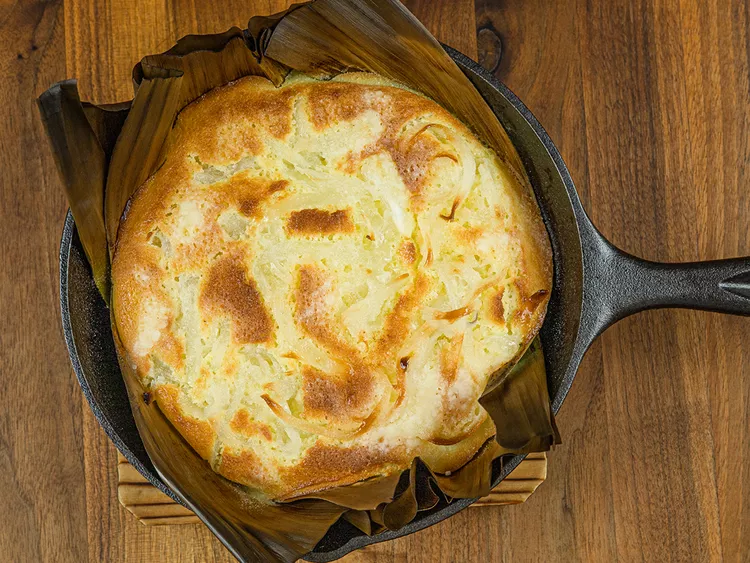Bibingka: A Traditional Filipino Delicacy
Introduction: Bibingka is a delectable traditional Filipino delicacy that has been enjoyed for generations. This rice cake, with its unique texture and flavor, holds a special place in Filipino cuisine. In this article, we will explore the origins, ingredients, preparation methods, and variations of bibingka, highlighting its cultural significance and how it has evolved over time.

Filipino Coconut-Rice Cake
I. Origins of Bibingka:
Bibingka traces its roots back to pre-colonial times in the Philippines.
It is believed to have originated from the rice cakes made by the indigenous people using glutinous rice.
Over the centuries, as the Philippines was influenced by different cultures, the recipe for bibingka evolved to include new ingredients and cooking techniques.
II. Ingredients:
1. Glutinous Rice Flour:
The primary ingredient in bibingka is glutinous rice flour, which gives it its distinctive chewy texture.
2. Coconut Milk:
Coconut milk adds richness and creaminess to the batter, enhancing the flavor of the bibingka.
3. Eggs:
Eggs are essential for binding the ingredients together and providing moisture.
4. Sugar:
Depending on personal preference, sugar can be added to sweeten the bibingka.
5. Butter:
Butter is often used to grease the baking pan and add a touch of richness to the final product.
6. Salt:
A pinch of salt is added to balance the sweetness and enhance the overall taste.

How to Make Rice Cake Bibingka
III. Preparation Methods:
1. Traditional Clay Pots:
In the past, bibingka was cooked in clay pots lined with banana leaves.
The pots were placed over charcoal or open fire, giving the bibingka a unique smoky flavor.

Bibingka
2. Modern Baking:
Nowadays, bibingka is commonly baked in rectangular pans or muffin tins in regular ovens.
The banana leaves are still used as a lining, adding an aromatic element.
IV. Cooking Process:
1. Preparing the Batter:
The batter is made by combining glutinous rice flour, coconut milk, eggs, sugar, melted butter, and a pinch of salt.
The mixture is then whisked until smooth.
2. Baking the Bibingka:
The batter is poured into the prepared pans lined with banana leaves and baked in a preheated oven until the top turns golden brown and the edges are slightly crispy.
V. Variations:
1. Classic Bibingka:
The classic bibingka is plain and simple, with a slightly sweet flavor and a dense, chewy texture.
2. Bibingka Espesyal:
This variation includes additional ingredients such as salted eggs, cheese, and sometimes even grated coconut, giving it a richer and more savory taste.
3. Bibingka Galapong:
Galapong refers to the use of soaked and ground rice instead of glutinous rice flour, resulting in a softer and more delicate bibingka.
VI. Cultural Significance:
Bibingka is not just a popular dessert in the Philippines; it is also closely associated with Filipino traditions and celebrations.
It is often served during Christmas season, particularly during the Simbang Gabi or Misa de Gallo, a series of nine early morning Masses.
Bibingka vendors can be found near churches, creating a festive and nostalgic atmosphere.
Bibingka, with its rich history and delightful flavors, continues to captivate the taste buds of Filipinos and foreigners alike. Whether enjoyed as a breakfast treat or a dessert, this traditional delicacy holds a special place in Filipino culinary culture. So, the next time you have the chance, savor a warm piece of bibingka and experience the unique taste of the Philippines.